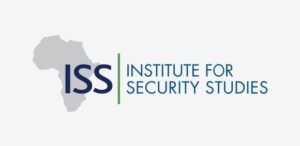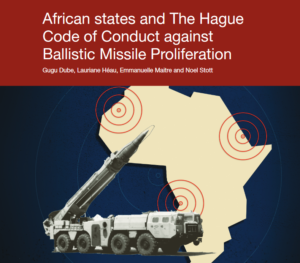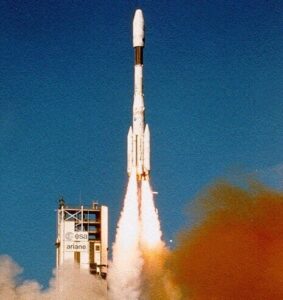African states and The Hague Code of Conduct against Ballistic Missile Proliferation
Institute for Security Studies - Africa
Africa Report 34 June 2021
Four of the five most recent subscribing states to The Hague Code of Conduct against Ballistic Missile Proliferation (HCoC) are African. Adopted in November 2002 in The Hague, the HCoC’s chief objective is to curb the proliferation of ballistic missiles capable of delivering nuclear, chemical or biological weapons, as well as related technology. When fully implemented, the HCoC holds significant security and socio-economic benefits, and is thus of crucial importance given Africa’s developmental context and imperatives.
JUNE 2021
Gugu Dube, Lauriane Héau, Emmanuelle Maitre and Noel Stott
Introduction

With four of the five most recent subscribing states being African, the continent has seen considerable positive development since 2016 with regard to The Hague Code of Conduct against Ballistic Missile Proliferation (HCoC).1 Adopted in November 2002, the HCoC’s chief
aim is to limit the proliferation of ballistic missiles, as they are the preferred delivery vehicle for weapons of mass destruction (WMD). The recent increase in their availability, geographic spread and sophistication, as well as their use in conflicts (such as in Yemen2 and the Armenian-Azerbaijani3 conflict), means that they are once again a growing security concern.
The HCoC not only is the only universal norm against the proliferation of ballistic missile systems but also enhances transparency in ballistic and space-launch programmes. This transparency takes the form of a confidence-building mechanism, which requires subscribing states to notify each other before any ballistic missile or space-launch vehicle is launched or test flights initiated. This is referred to as pre-launch notifications.
Africa stands in a paradoxical position vis-à-vis the HCoC. The risk posed by ballistic missiles appears relatively low, as few countries have embarked on such programmes on the continent. The proliferation of small arms and light weapons (SALW) is a much more immediate threat for many African states. Moreover, although on the increase, only a handful of states are currently heavily investing in the peaceful use of rocket technologies.
Despite this, regional actors remain supportive of the HCoC and the majority of African states have subscribed to it. A closer analysis of the position of most African countries on the HCoC indicates that this support is an expression of their commitment to the struggle against
the proliferation of WMDs and their delivery vehicles in general. Indeed, it is integral to their unequivocal call for the total eradication of all WMDs. This position is held in tandem with an emphasis on the fact thatnon-proliferation instruments must not prevent the
development of civilian technologies.
African states are also sensitive to the financial and human resource costs associated with the
implementation of global non-proliferation norms and commitments. They often insist on the importance of limiting the administrative burden for implementing countries; the streamlining of reporting processes; and the need to adapt the frameworks to suit their context.
This report gives an overview of the HCoC and its implementation on the African continent. It
points to several challenges but also a number of opportunities for African states and ways to increase the HCoC’s relevance. Finally, it establishes a set of recommendations going forward.
1 In 2016, the ISS published an ISS Policy Brief on this topic. See: https://issafrica.org/research/policy-brief/the-hague-code-of-conduct-against-ballistic-missile-proliferation-relevance-to-african-states
2 See I Williams and S Shaikh, Lessons from Yemen’s missile war, Center for Strategic and International Studies (CSIS), Missile Threat, 11 June 2020, https://missilethreat.csis.org/lessons-from-yemens-missile-war/; Reuters, Yemen’s Houthis attack Saudi oil heartland with drones, missiles, 8 March 2021, https://www.reuters.com/article/us-yemen-security-saudi/yemens-houthis-fire-missiles-drones-at-saudi-oil-facilities-idUSKBN2AZ03F?il=0
3 S Shaikh and W Rumbaugh, The air and missile war in Nagorno-Karabakh: Lessons for the future of strike and defense, CSIS, Missile Threat, 8 December 2020, https://missilethreat.csis.org/the-air-and-missile-war-in-nagorno-karabakh-lessons-for-the-future-of-strike-and-defense/




